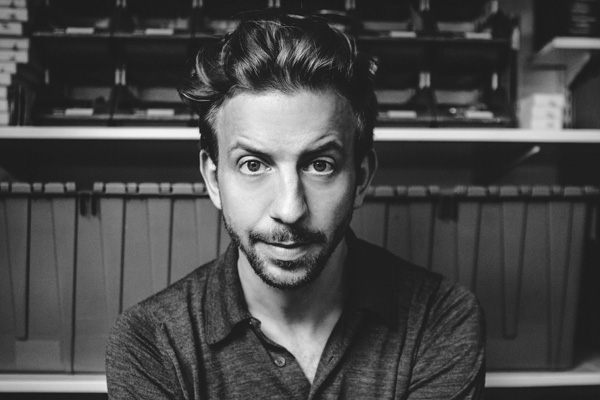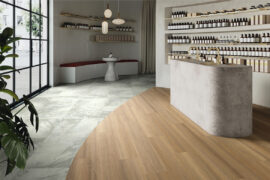Hong Kong based designer David Ericsson chats to indesignlive about the birth of VOID watches, his design philosophy, the growth of the company and plans for the future.

August 20th, 2014
How did VOID watches start?
VOID Watches started as a side project in 2008. I’d been working for a few years in an industrial design office after graduating from the Royal Institute of Technology in Stockholm when I was offered an interesting position as a development manager for a company in Hong Kong. After a year in a large company I thought it was time to go back to something smaller and more genuine and I started my own company. The first thing I did was to start developing a watch (our first ever V01) and to make ends meet I also did a lot of consulting work for my old Swedish clients. About two years later we sold enough watches to skip consulting and ever since I’ve been focusing on creating my own brands and products.
Who were the main people involved?
In the beginning it was just me working out of my flat but after a while I took on one more person and rented a ground floor studio space in Sheung Wan, now one of Hong Kong’s creative hotspots but back then cheap and empty. Our original studio has since developed into it’s own brand (squarestreet) and is now held on a steady course forward by my friend and business partner Alexis Holm who’s better known as the founder of Swedish footwear brand gram.
What was their interest in timepiece design?
Wristwatches is a very fun object since it’s something that people tend to develop a rather close relationship with. For that reason it’s a bit more interesting from a design perspective than say a toaster or a vacuum cleaner. But, the main reason for getting into watches is because it’s something that I’m very interested in. When I was younger I used to collect watches made in the 60s and 70s. Cheap watches but with great attention to detail and quality.
Were there any unexpected challenges or opportunities in starting the brand?
I tend to see it the other way around. Since I didn’t really expect anything in the beginning there weren’t any unexpected challenges, just challenges. I’d never designed a watch before I started VOID Watches and after working with larger products it was quite a change to work with such a small item where a 10th of a millimetre can make a big difference. I also had to learn the wholesale process and try to convince retailers that a small brand could make watches of good quality. When I started it was very few brands within our niche and shops were only used to Timex and Casio.
What is the design philosophy behind the designs?
The short version is to keep things simple. I try to come up with ideas that are simple in a unique and recognisable way without being too crazy. It’s harder than you think to come up with things like that. I then try to combine this design with nice materials, colors and finishes.
After six years, what has been the most rewarding part of starting and growing VOID?
It’s hard to pinpoint one specific thing. I started my own brand because I’m interested in the whole process of developing products and to see them through the whole cycle of selling, using etc. It’s a dream design project to be involved in every single aspect of a product.
What is the growth/business model for VOID? (Do you intend to focus on specific markets or demographics?
This is where I wish I had a more articulate answer. The truth is that we’re not very corporate when it comes to planning these things. We make watches that we like and then we keep our fingers crossed that others will like them too. So far this has worked well and we’re growing steadily and we hopefully learn a thing or two along the way. We don’t target specific markets but it would be fun to expand the brand on our home turf Sweden a bit more.
Would you like to expand your catalogue beyond timepieces?
Yes and no. One of the most difficult things when running a company/brand is to decide what not to do. There’s just too many products that would be a treat to design and develop but we can’t make everything well and I’m afraid we’d dilute our offering if we started to introduce too many different products in the range. But, I won’t rule out that I’ll succumb to the temptation at some point in the future.
Where would you like to see VOID progress to in the future?
I’d like to keep building or team and steadily grow the business. We’ve been doing things rather slowly so far and I think that’s how we’ll continue. It would also be interesting to open another office somewhere in the world at some point in the future.
Which other brands/designers do you admire?
I’m unfortunately a bit too caught up in my own work to keep as much track of others as I’d like to but I really like the works of Michael Young who’s studio is just across the street from us. Michael was a big inspiration when I started out. I also really like Jamie McLellan’s work, he’s an extremely talented designer.
VOID Watches
voidwatches.com
INDESIGN is on instagram
Follow @indesignlive
A searchable and comprehensive guide for specifying leading products and their suppliers
Keep up to date with the latest and greatest from our industry BFF's!
The new range features slabs with warm, earthy palettes that lend a sense of organic luxury to every space.

The undeniable thread connecting Herman Miller and Knoll’s design legacies across the decades now finds its profound physical embodiment at MillerKnoll’s new Design Yard Archives.

It’s bold, breathtaking and almost surreal – and for Alexander Wong, it’s a winning project that explores the depths of experiential design.

ONE BEDFORD PLACE is the latest project from via. that combines beautiful design and ultimate function with outstanding results.
The internet never sleeps! Here's the stuff you might have missed

Foster + Partners has recently delivered two significant projects in Sydney, working across both commercial and public transport infrastructure.

Karndean’s newly evolved Opus range brings versatility and durability to the forefront of commercial flooring. Blending design-led aesthetics with robust, high-performance functionality, it’s a go-to solution for spaces that demand both style and resilience.